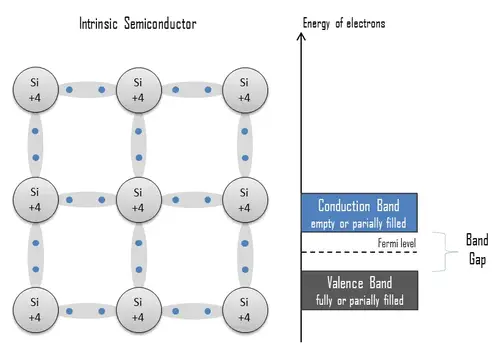Diodes work in a circuit by allowing current to flow in one direction (anode to cathode) while blocking it in the reverse direction.
Understanding Diodes in Circuits
A diode is a semiconductor device with two terminals: an anode and a cathode. It is designed to allow current to flow in one direction, from the anode to the cathode, while blocking current in the reverse direction. This unidirectional behavior makes diodes useful in a variety of applications, including rectification, voltage regulation, and signal modulation. In this article, we’ll explore how diodes function within a circuit.
Working Principle of a Diode
Diodes are typically made from semiconductor materials, such as silicon or germanium. The semiconductor is doped with impurities to create two regions: a p-type region with an excess of positive charge carriers (holes) and an n-type region with an excess of negative charge carriers (electrons). When these regions are joined, a junction known as the p-n junction is formed.
At the p-n junction, electrons from the n-type region combine with holes from the p-type region, creating a depletion region with no charge carriers. This depletion region creates a built-in electric field that opposes the flow of charge carriers, effectively blocking the flow of current.
Forward Bias and Reverse Bias
When a voltage is applied to a diode, it can be in one of two states: forward bias or reverse bias. In forward bias, the voltage at the anode is higher than the voltage at the cathode. This condition reduces the potential barrier of the p-n junction, allowing current to flow through the diode. Forward-biased diodes exhibit a low resistance and allow current to flow in the direction of the anode to the cathode.
In reverse bias, the voltage at the cathode is higher than the voltage at the anode. This condition increases the potential barrier of the p-n junction, effectively blocking the flow of current. Reverse-biased diodes exhibit a high resistance and prevent current from flowing in the direction of the cathode to the anode.
Applications of Diodes in Circuits
- Rectification: Diodes can convert alternating current (AC) into direct current (DC) by allowing current to flow only in one direction.
- Voltage Regulation: Zener diodes, a special type of diode, can maintain a constant output voltage regardless of variations in input voltage or load conditions.
- Signal Modulation: Diodes can be used in circuits to modulate or demodulate signals in communication systems, such as amplitude modulation (AM) and frequency modulation (FM).
In summary, diodes play a crucial role in various circuit applications due to their ability to control the direction of current flow. They are essential components in rectifiers, voltage regulators, and signal modulators, among other applications.




